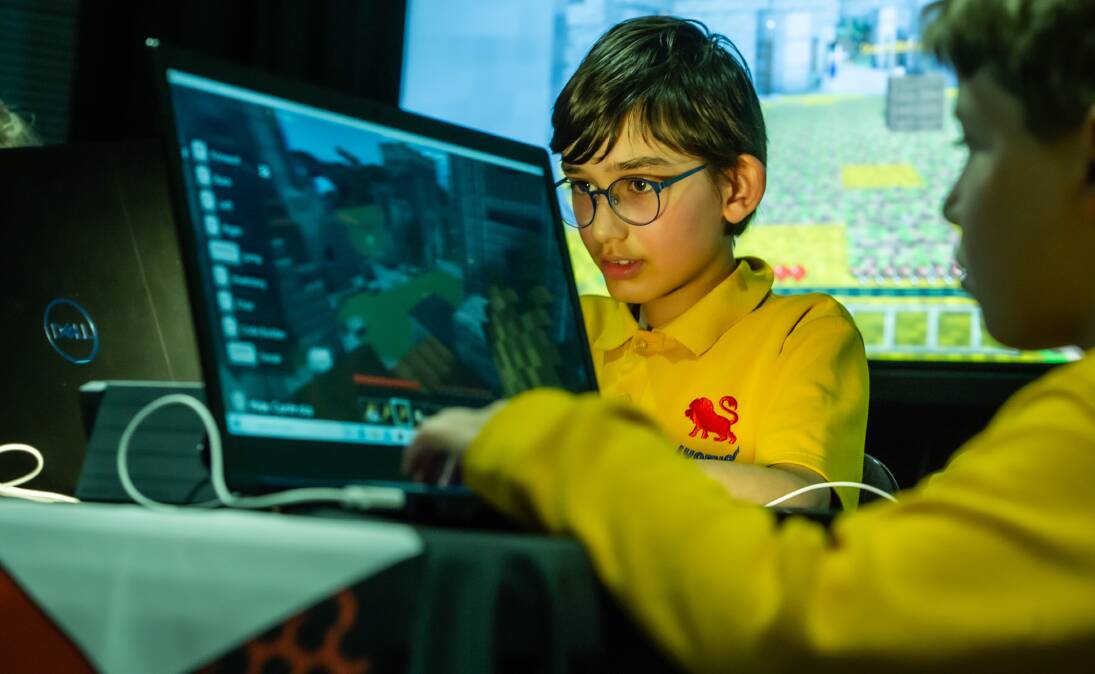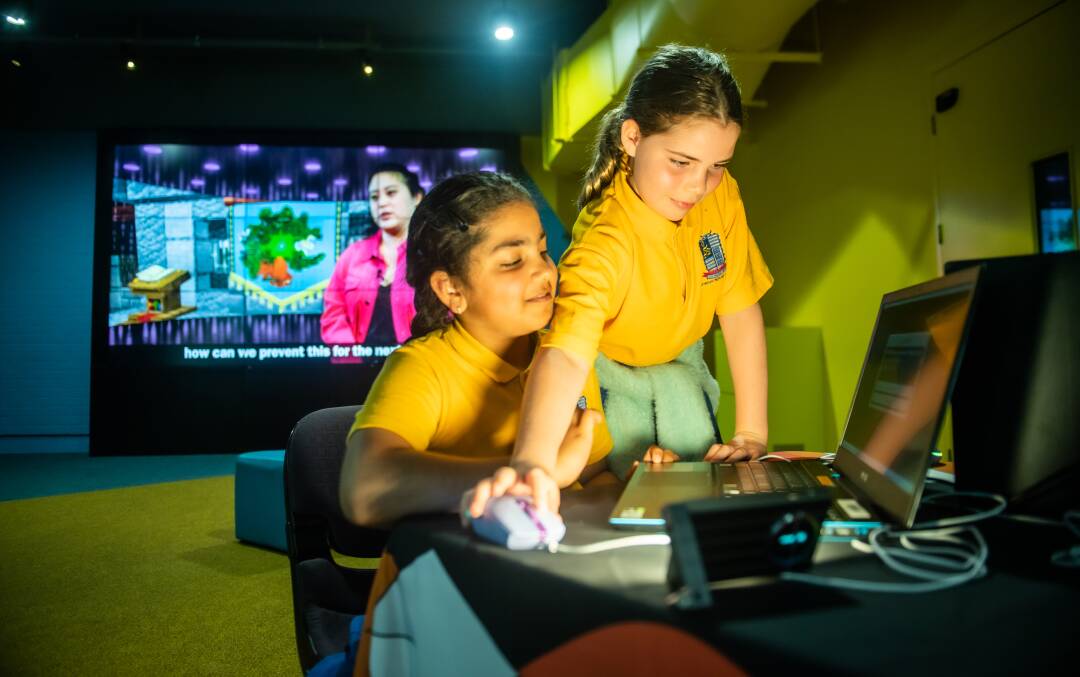
Chooks and foxes are teaching kids around the country about cyber security through an online game launched this week at Questacon.
Students work in teams to protect their chickens and defend the castle while developing skills to stay safe online and succeed in a future STEM career.
Lyneham Primary School students were invited along to try out the Questacon Cyber Castle Challenge, working in teams through collaborative gameplay in a custom Minecraft world.
Josiah Nuske, aged 10, said he played Minecraft at home with his big brother and the cyber-security version stacked up.
"What I really liked about it is that, instead of needing to collect all the items, there's a shop where you can buy them," he said.
"Eggs are money."
The program was launched out of Australia's 2020 Cyber Security Strategy, a federal government initiative aimed at improving online safety and bolstering awareness of cyber threats.
More than 200 teachers have signed up to deliver the educational resource to classrooms around the country.
Broderick Matthews, Questacon manager, said the game developed creativity, collaboration and critical thinking skills, which would be necessary to tackle cyber security problems of the future.
"At this stage, they're probably not as engaged with cyber security as adults," he said. "But we know that it's going to be a big issue into the future."
"Not only do we need more cyber-security professionals, we also need the Australian population as a whole more engaged."

Mr Broderick said the game was structured so students couldn't play alone. They needed teamwork to win.
"We see in classrooms the game doesn't have kids sitting silently at the computer, they're talking to each other, they're engaging with each other," he said.
"They're assigning each other to do different things in different parts of the castle, or they're sharing knowledge with each other and teaching friends parts of the game."
Deanna Gibbs, a cyber security expert at IBM, said primary school students were already using technology to communicate with their friends, learn and play games.
"If they're using technology, then they need to understand how to be safe," she said.
"So talking to kids in a way that's accessible to them, in a way that's just part of what they normally do - like playing Minecraft - means it's not a lecture or a lesson, it just becomes something they think about."
Ms Gibbs said the game was structured in a way that was applicable to real life, without being real life.
She said parents putting the fear of cyber attacks into children wasn't necessarily the best strategy.
"Fear hasn't been a good motivator for any behavioural change that I've employed," she said.
"If you talk about the consequences, it doesn't need to be as fear, it doesn't need to be the worst case, you can talk about it in something that's relatable to them, something that allows them to think and have a conversation with you.
"Then you just do the 1 per cent changes and make them your practice and keep building on that because the online world is always changing."
We've made it a whole lot easier for you to have your say. Our new comment platform requires only one log-in to access articles and to join the discussion on The Canberra Times website. Find out how to register so you can enjoy civil, friendly and engaging discussions. See our moderation policy here.







